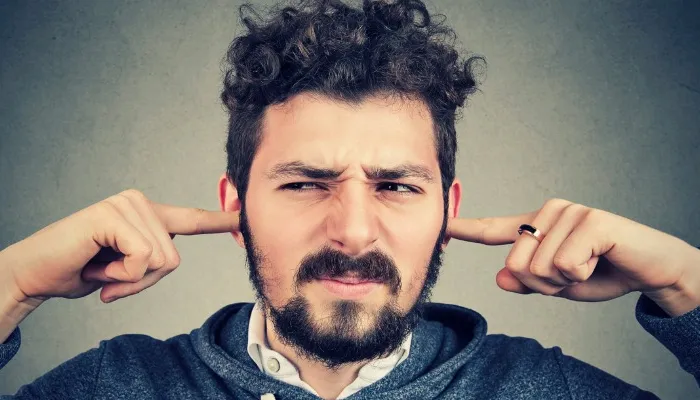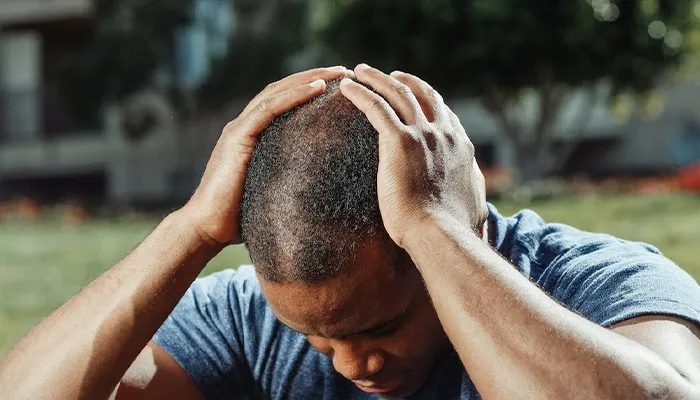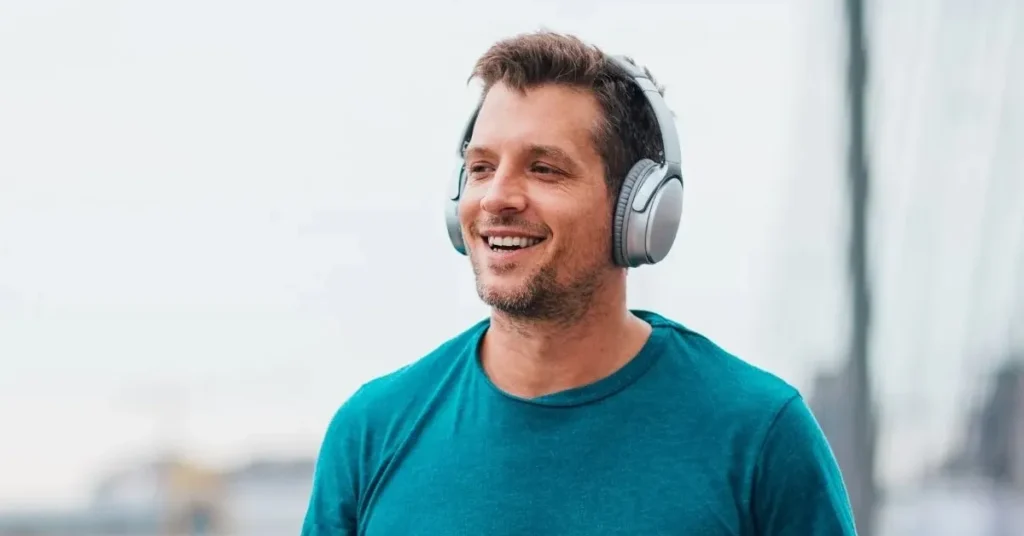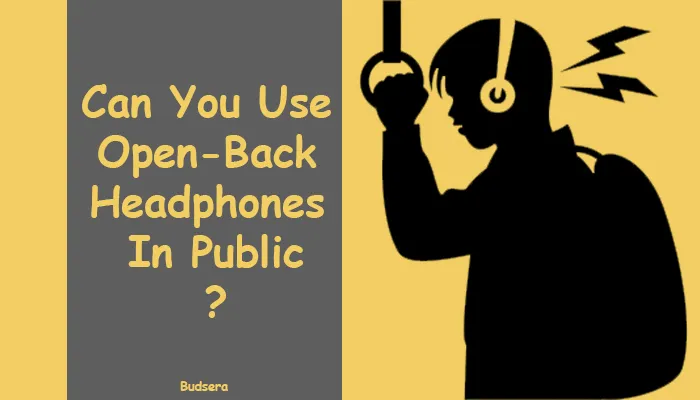Have you ever wondered if you can use your open-back headphones in public? You love the spacious soundstage and natural tonality they provide, but aren’t sure if the sound leakage will bother those around you.
Using open-back cans in public is a controversial topic in the headphone community with some for and some against. On the one hand, you want to enjoy your favorite tracks and open-backs do it best. On the other hand, you don’t want to subject strangers to your music against their will.
There are a few factors to consider before rocking your open-backs in public. Let’s dive in and explore whether using open-back headphones in public is right for you.
Can you use open-back headphones in public?
Can you use open-back headphones in public? Sure, if you don’t mind sharing your music with everyone around you. Open-back headphones, while providing an open soundstage, leak a lot of audio by design.
In quiet places
Open-backs can work in libraries or coffee shops where ambient noise overpowers the sound leakage. Find a spot away from others since your tunes may still disturb someone sitting close by.
On public transit
We don’t recommend open-backs on busses, trains or planes. They let in too much environmental noise and bleed your audio excessively. Closed-back or noise-canceling headphones are better options for travel and commute.
Outdoors
Open-back headphones are suitable for walking, jogging or other activities in open spaces where there are fewer people around to hear your music. The open design keeps you aware of your surroundings, though the sound quality may be compromised.
As you can see, while open-back headphones offer an expansive soundstage and natural reproduction, their lack of isolation poses challenges in many public situations.
If sharing your music with unwilling bystanders concerns you, closed-back or noise-canceling headphones are probably your best bet for use outside your home.
Related: How to Convert Open Back Headphones into Close Back? Read Also!
With some situational awareness, however, open-backs can work in select public places. The choice ultimately comes down to your needs, preferences, and consideration for others.

How Much Sound Does Open Back Can Actually Leak?
Open-back headphones are designed to provide an open, airy soundstage, but that openness comes at the cost of sound leakage. How much audio leaks out depends on several factors.
Volume Level
The louder the volume, the more sound will escape. At moderate levels, open-backs typically leak enough to be heard by someone sitting nearby. At higher volumes, the audio can be loud enough to disturb others several feet away.
Ear Cup Design
The size, shape and material of the ear cups all affect leakage. Larger cups that fully enclose your ears will contain more sound than smaller on-ear models. Cups made of solid materials like metal also block more noise than fabric or mesh cups.
Headphone Construction
Some open-back headphones are built better than others, with higher quality, tightly sealed components that prevent excess sound from escaping. Lesser quality models may have gaps or thin, poorly insulated parts that allow substantial leakage.
Your Environment
Where you use the headphones also matters. In a loud, public place the sound leakage may go unnoticed. But in a quiet library or shared office space, open-back headphones can be quite audible and distracting to others.
So can you wear open-back headphones in public? Yes, but be mindful of the volume level and your surroundings.
For the sake of courtesy, you may need to use closed-back headphones in some environments or switch to in-ear models when discretion is important. With open-backs, a little consideration for others will ensure you can enjoy your audio without causing a disturbance.

What Factors make it difficult to hear from Open back in Public?
Open-back headphones allow sound to escape, so others around you can hear what you’re listening to. This can make using open-back headphones in public tricky.
Sound Leakage
The open design means audio will leak out, potentially disturbing those nearby. On a bus or train, fellow passengers may be able to make out lyrics or the melody from your music. In an office, colleagues may find the leakage distracting or annoying.
The level of sound leakage depends on the exact headphones and volume level, but it’s generally not ideal for close quarters.
Wind
Wind is another factor that can make using open-back headphones in public even more challenging. When you’re outdoors, the gusts of wind can interfere with the audio quality and disrupt your listening experience.
The open design of these headphones allows the wind to enter the ear cups and create turbulent airflow, resulting in distortion or even completely muffling the sound. This can be quite frustrating, especially if you’re trying to enjoy your favorite music or podcast while walking or commuting.
Ambient Noise
The open-back design also allows ambient noise in. Chatter, traffic, and other environmental sounds can penetrate the open areas of the headphones, making it hard to hear your content clearly, especially at lower volumes.
This can undermine the benefits of open-back headphones like a wider, more natural soundstage. The louder and more chaotic the environment, the more difficult it will be to use open-back headphones.
Lack of Isolation
Unlike closed-back models, open-back headphones provide very little noise isolation. You remain aware of your surroundings instead of being cut off from external sounds.
This can be an advantage in some settings but a disadvantage in noisy, public environments where you want to block out what’s happening around you.
In the end, while open-back headphones offer some benefits, their open design makes them generally a poor choice for use in busy public places.
For enjoying your audio content on the go, you’re typically better served by closed-back or noise-canceling headphones. But when in a quiet environment, open-back headphones can provide an unparalleled listening experience.

How Do I Know If My Open-Back Headphones Are Too Loud?
How can you tell if your open-back headphones are too loud for public use? There are a few signs to look out for:
Volume Leakage
If the sound coming from your headphones is clearly audible to people around you, that’s a sign they may be too loud for public use. Open-back headphones, by design, allow some sound to escape.
But if the volume is cranked up high enough for others to make out the lyrics or melody, it’s probably too loud. As a courtesy, keep the volume at a level where the sound leakage is subtle enough that others have to strain to hear it.
Distracting to Others
Glance around occasionally to check if your open-back headphones seem to be distracting or irritating anyone nearby. Look for signs like people frequently glancing in your direction or moving away from you.
If your headphones are diverting people’s attention or forcing them to relocate to get away from the noise, the volume likely needs to be turned down.
In public places, it’s best to keep the volume on open-back headphones low enough so the sound is contained to an arm’s length around you.
Keep in mind that what may seem like a reasonable volume to you could still be too loud for others, especially in quiet areas. When in doubt, lower the volume. It’s better to enjoy your audio experience with open-back headphones at a volume only you can hear.
Why do people like open-back headphones?
Open-back headphones have some advantages over closed-back models that many audiophiles and casual listeners appreciate.
Superior sound quality
Open-back headphones typically have a wider soundstage, which means the sound has more depth and space. Instruments and vocals sound more natural. You get a truer representation of the audio. For critical listening, open-back is preferred by many.
More comfortable.
Open-back headphones are lighter and breathable since they don’t have the sealed ear cups. Your ears won’t get as warm or sweaty, even during long listening sessions. The open design prevents that closed-in feeling some get from closed-back headphones.
Situational awareness.
With open-back headphones, you can still hear sounds from your environment. This allows you to be aware of your surroundings and engage in conversation. Closed-back models block out nearly all external noise. For office or home use, open-back can be more practical.
Natural headphone experience.
Some people feel closed-back headphones sound unnatural or like you’re in an “isolation chamber.” Open-back provides a headphone experience that still feels open and spacious. The audio sounds like it’s coming from around you, not trapped inside sealed ear cups.
While open-back headphones may leak more sound and let in ambient noise, for many the benefits of superior sound quality, long-term comfort, situational awareness, and a natural listening experience outweigh the potential downsides.
Open-back simply provides an enjoyable, high-fidelity listening experience for both discerning audiophiles and casual music fans.

How to Use Open-Back Headphones in Public
Using open-back headphones in public can be tricky, but with some precautions you can enjoy your favorite tunes and still be considerate.
Choose your location wisely.
Opt for places where people expect ambient noise, like public transit, coffee shops, parks, or open-office spaces. Avoid tighter quarters like libraries, classrooms or work meetings where your audio might disturb others. If in doubt, ask someone nearby if they mind if you play your headphones at a moderate volume.
Keep the volume in check.
Even in locations where open-back headphones are suitable, make sure the volume remains at a level where you can still hear surrounding sounds and conversations.
As a rule of thumb, if someone standing a few feet away can clearly hear every word or note coming from your headphones, it’s too loud. Lower the volume to where it’s audible to you but not blasting.
Consider a compromise.
If open-back headphones aren’t ideal for your situation, you have options. Closed-back headphones with good sound quality can provide an immersive listening experience without sound leakage.
Wireless earbuds are another choice, with models catering to audiophiles as well as casual listeners. For the best of both worlds, look for headphones with a detachable cable you can swap out for an open or closed back.
Using open-back headphones responsibly in public is all about balancing your enjoyment of the audio with respect for those around you. Follow these tips and you’ll be rocking out and making friends at the same time.
FAQs
Conclusion
So there you have it, the pros and cons of rocking open-back headphones in public. While the sound quality and comfort might tempt you, the lack of noise isolation means everyone around you gets to enjoy your favorite tracks too.
Whether or not that bothers you ultimately comes down to your own preferences and how much you value high-fidelity audio versus being considerate in shared spaces.
If sound leakage is a concern, consider using open-backs at home or in quiet areas, and switching to closed-back headphones when out and about. Compromise is key.
The good news is with so many great options on the market today at various price points, you can find a pair perfect for any situation.
So go ahead, pump up the volume and enjoy the music – just maybe keep it to yourself when riding the subway or grabbing coffee at your local shop.
- Charging Bluetooth Headphones During Use: Is It Possible? - January 9, 2024
- Why Over-Ear Headphones Best for Hearing Health? (7 Reasons) - December 12, 2023
- Fixing the Bose Earbuds Not Charging in Case Problem: Solutions That Work - November 24, 2023
